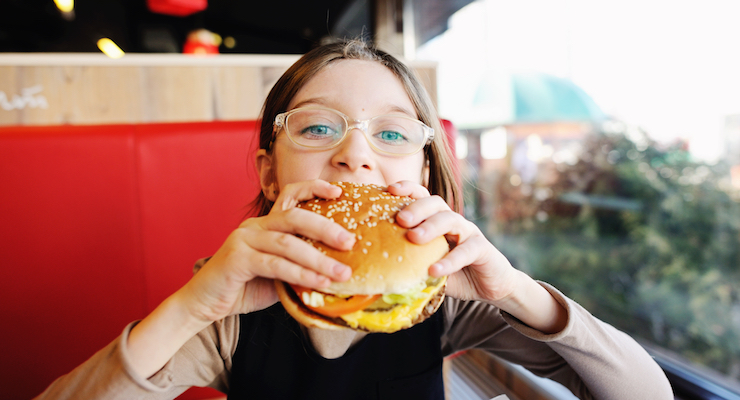Market Updates
Fast Food Consumption Among Children and Adolescents Back on the Rise
Despite decreases seen between the years 2003 and 2010, there has been a steady uptick according to NHANES data.

By: Mike Montemarano

The National Center for Health Statistics, an U.S. Centers for Disease Control agency, recently issued a data brief indicating that fast food consumption among children is once again on the rise after experiencing a decline, as the U.S. population remains well within the grip of an obesity epidemic which the CDC reports reached an all-time high in the same period of time.
According to the study, children consumed an average of 13.8% of their daily calories from fast food on any given day from 2015-2018, an increase from a previous estimate. Daily calories derived from fast food by children and adolescents in 2003-2004 were 14.4%, but decreased to 10.6% in 2009-2010, before creeping up to the most present rate.
To narrow these statistics down to a point-in-time reference, the findings indicated that over a third (36.3%) of children between the ages of 2 and 19 consumed fast food on a given day. 11.1% of those surveyed obtained less than a quarter of their daily calories from fast food, while 13.8% of minors obtained 25-45% of their daily calories from fast food. 11.4% of adolescents obtained over 45% of their daily calories from fast food on a given day.
There were differences in the breakdown of fast food-derived calories consumed by sex and age, as well. Girls between the ages of 12 and 19 consumed 18.5% daily fast food calories, significantly higher than boys, whose intake was 14.9%.
Overall, the percentage of calories consumed from fast food increased by age, the study found. Children between the ages of 2 and 11 had 11.4% of their calories consumed from fast food on average, compared to 16.9% for adolescents between the ages of 12-19, an increase which was seen in both boys and girls.
It was additionally observed that non-Hispanic White children consumed significantly lower percentages of daily calories from fast food (12.9%) compared with non-Hispanic Black (16.9%) and Hispanic (14.8%) children and adolescents. While there were no significant differences in these demographic groups between the ages of 2 and 11, the differences were very pronounced in adolescents between the ages of 12 and 19.
In the 12-19 years old category, White adolescents consumed 14.8% of their daily calories from fast food, which was significantly lower than non-Hispanic Black (21.5%) and Hispanic (18.5%) adolescents.
Since the NCHS began tracking fast food consumption among adolescents in 2003, the percentage of calories from fast food that children and adolescents consumed has never been higher.
Data which was sourced in this study came from the National Health and Nutrition Examination Survey over a period spanning 2003-2018, which was yielded in eight two-year cycles. Dietary information obtained by NHANES is collected from in-person interviews.


